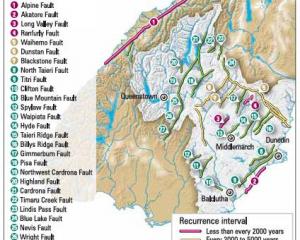
Scores more were missing and information was only beginning to trickle in from the sparsely populated surfing destination, so casualties were expected to rise.
With few able to get to the islands to help with searches, fisherman were left to find the dead and look for the living.
Corpses were strewn about since there were not enough people to dig graves, according to the Mentawai district chief, Edison Salelo Baja.
More than 4,000 people expected to spend the night without shelter because tents and other supplies had also not arrived.
The fault that ruptured on Monday on Sumatra island's coast also caused the 2004 quake and monster Indian Ocean tsunami that killed 230,000 people in a dozen countries.
Though hundreds of disaster officials were unable to get to many of the villages on the Mentawai islands - reachable only by a 12-hour boat ride - they were preparing for the worst.
"We have 200 body bags on the way, just in case," said Mujiharto, who heads the Health Ministry's crisis centre, shortly before announcing a five-fold increase in the death toll.
Indonesia, the world's largest archipelago, is prone to earthquakes and volcanic activity due to its location on the so-called Pacific Ring of Fire - a series of fault lines stretching from the Western Hemisphere through Japan and Southeast Asia.
The country's most volatile volcano, Mount Merapi, 1,300 kilometres to the east, started to erupt at dusk on Tuesday as scientists warned that pressure building beneath its lava dome could trigger one of the most powerful blasts in years.
The 7.7-magnitude quake that struck late on Monday just 20 kilometres beneath the ocean floor was followed by at least 14 aftershocks, the largest measuring 6.2, according to the US Geological Survey.
Many panicked residents fled to high ground and were too afraid to return home.
That could account in part for the more than 500 people still missing, said Hendri Dori, a local parliamentarian who was overseeing a fact-finding missing. "We're trying to stay hopeful," he said.
Hundreds of wooden and bamboo homes were washed away on the island of Pagai, with water flooding crops and roads up to 600 metres inland. In Muntei Baru, a village on Silabu island, 80 percent of the houses were badly damaged.
Those and other islets hit were part of the Mentawai island chain, a popular and laid-back surfing spot 280 kilometres from Sumatra.
A group of Australians said they were hanging out on the back deck of their chartered surfing vessel, anchored in a bay, when the temblor hit just before 10 p.m.
It generated a wave that caused them to smash into a neighbouring boat, and before they knew it, a fire was ripping through their cabin.
"We threw whatever we could that floated - surfboards, fenders - then we jumped into the water," Rick Hallet told Australia's Nine Network. "Fortunately, most of us had something to hold on to ... and we just washed in the wetlands, and scrambled up the highest trees that we could possibly find and sat up there for an hour and a half."
Ade Edward, a disaster management agency official, said crews from several ships were still unaccounted for in the Indian Ocean.
The quake also jolted towns along Sumatra's western coast - including Padang, which last year was hit by a deadly 7.6-magnitude tremor that killed more than 700. Mosques blared tsunami warnings over their loudspeakers.
"Everyone was running out of their houses," said Sofyan Alawi, adding that the roads leading to surrounding hills were quickly jammed with thousands of cars and motorcycles.
"We kept looking back to see if a wave was coming," said 28-year-old resident Ade Syahputra.




